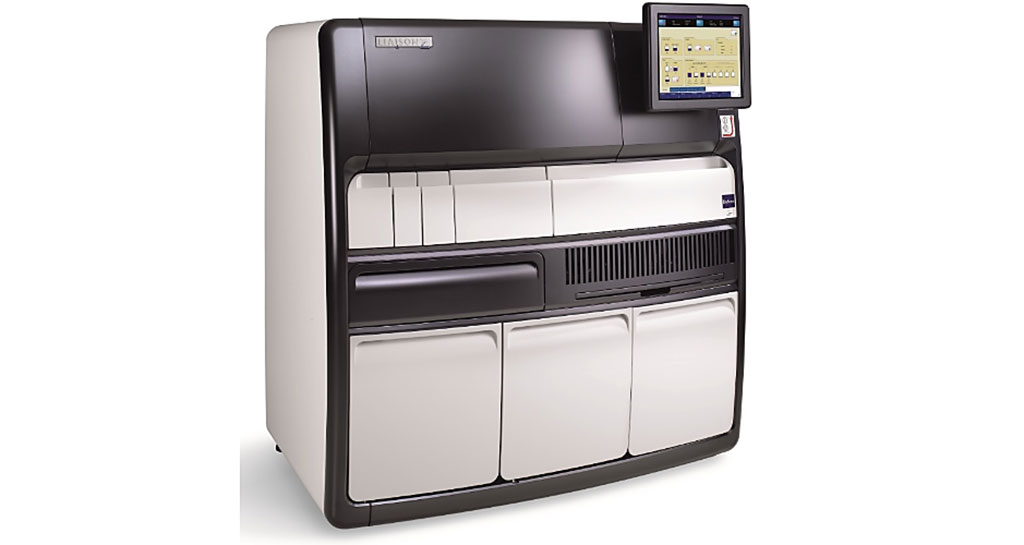Fully-Automated Calprotectin Immunoassay Validated for IBD Patients
By LabMedica International staff writers
Posted on 13 Jul 2020
The incidence of inflammatory bowel disease (IBD) is increasing. This chronic intestinal inflammation disorder comprises two major forms of inflammation: Crohn’s disease (CD) and ulcerative colitis (UC). Distinction between inflammatory bowel disease (IBD) and irritable bowel syndrome (IBS) based on clinical symptoms is often difficult.Posted on 13 Jul 2020
Multiple studies have proven the use of calprotectin in IBD patients as a biomarker in monitoring disease activity, response to treatment and relapse. Calprotectin levels directly correlate with the amount of granulocytes present at the intestinal inflammation site, correlating with the severity of IBD. The amount of patients being screened with calprotectin for IBD is increasing to avoid unnecessary endoscopy, thus a need for an easy to use and quick laboratory assay arises.

Image: The LIAISON XL is a fully automated chemiluminescence analyzer, performing complete sample processing (Photo courtesy of DiaSorin).
Clinical Biochemists and their associates at the OLVG Oost Hospital (Amsterdam, the Netherlands) measured calprotectin in 303 subjects in five patient groups: IBD: ulcerative colitis (UC) and Crohn’s disease (CD); non-IBD: IBS, other gastrointestinal diseases and controls (healthy patients with no gastrointestinal disease). The patients provided fecal samples collected at home using a standard sample container provided by the laboratory. The samples were stored frozen up to one week before measuring calprotectin concentrations.
The Calprotectin Stool Extraction Device was used to prepare the stools for the Liaison calprotectin immunoassay and the fecal calprotectin immunoassay was conducted in the LIAISON XL analyzer (DiaSorin, Saluggia, Italy). This immunoassay was compared to the EliA calprotectin 2 immunoassay run on the Phadia ImmunoCAP250 (Thermo Fisher Scientific, Waltham, MA, USA).
The scientists reported that the calprotectin immunoassay of DiaSorin showed good analytical performance with frozen samples. The presence of blood in the stool can interfere with the measurement of calprotectin. Patients suffering from IBD (UC or CD) showed significant higher concentrations of fecal calprotectin compared to controls (UC:710 ± 921 mg/kg; CD:967 ± 1,243 mg/kg; controls:11 ± 8 mg/kg) using DiaSorin’s immunoassay. The remaining non-IBD groups showed no significant difference compared to controls. Follow-up of nine patients showed a significant decrease in fecal calprotectin after treatment. At 50 mg/kg cut-off value, the negative predictive value for DiaSorin’s immunoassay was 96% and the positive predictive value 83% (sensitivity of 95% and specificity of 86%).
The authors concluded that the lack of standardization contributes to the numerical differences between the two methods, but the qualitative conclusions do not differ. DiaSorin’s calprotectin immunoassay can be used both to distinguish between IBD and non-IBD patients as well as for follow-up of IBD patients. The assay has a shorter extraction time and the time of measuring is much shorter making it very suitable for laboratories with high throughput of samples. The study was published online on June 24, 2020 in the journal Practical Laboratory Medicine.




 assay.jpg)







